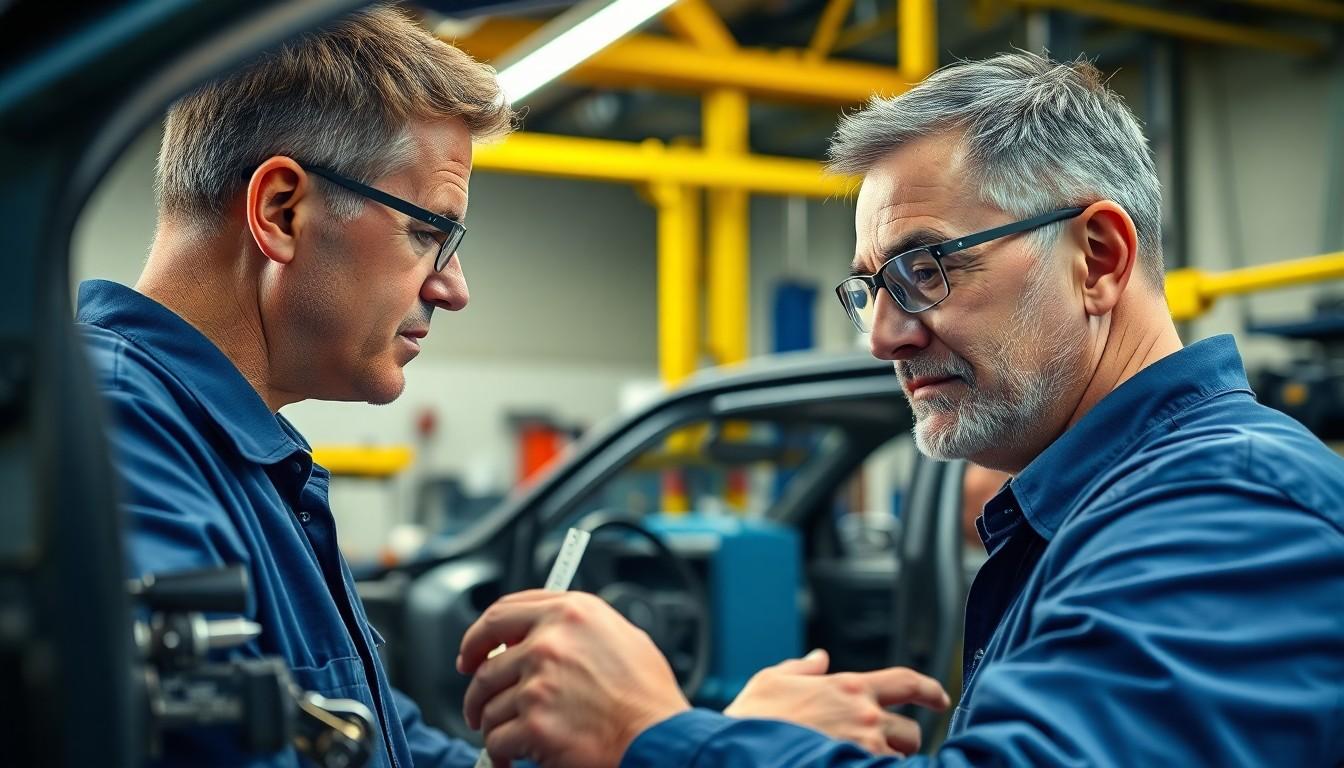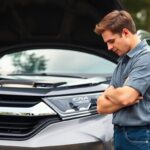When it comes to vehicle damage, few questions cause as much concern as “Are unibody frames repairable?” We’ve heard the worry in our customers’ voices when they discover their vehicle’s structural integrity might be compromised after an accident.
The truth is, unibody frame repair isn’t black and white. While traditional ladder frames could be straightforwardly repaired or replaced, modern unibody construction presents unique challenges and possibilities. Many drivers assume a damaged unibody means totaling the vehicle, but that’s not always the case. With today’s advanced repair techniques and specialized equipment, what was once considered irreparable damage can now often be restored to manufacturer specifications.
Understanding Unibody Frame Construction
Unibody frame construction represents the predominant design approach in modern vehicles, integrating the body and frame into a single unified structure. This engineering method creates vehicles that are lighter, more fuel-efficient, and offer improved handling compared to traditional body-on-frame designs.
How Unibody Frames Differ From Traditional Frames
Unibody frames fundamentally differ from traditional frames through their integrated structural approach rather than separate components. Traditional body-on-frame construction features a rigid ladder-like chassis with the vehicle body mounted on top, creating two distinct components. Unibody designs, in contrast, incorporate the frame elements directly into the body panels, floor pans, and structural pillars to form a single cohesive unit. This integration distributes impact forces throughout the entire structure during collisions, improving passenger safety through designed crumple zones that absorb energy. Unibody vehicles typically weigh 10-15% less than comparable body-on-frame models, contributing to improved fuel economy and nimbler handling characteristics. The unified construction also results in vehicles with lower centers of gravity, reduced body flex, and more precise steering response compared to their traditional counterparts.
Common Materials Used in Modern Unibody Design
Modern unibody frames incorporate sophisticated materials engineered for optimal strength-to-weight ratios and impact resistance. High-strength steel (HSS) forms the core of many unibody structures, providing tensile strengths up to 550 MPa while maintaining formability for complex shapes. Advanced high-strength steel (AHSS) appears in critical structural components, offering improved crash protection with strengths exceeding 780 MPa. Aluminum alloys feature prominently in premium vehicles, reducing weight by up to 40% compared to steel components while maintaining structural integrity. Carbon fiber reinforced polymers (CFRP) have entered production in luxury and performance models, delivering exceptional strength with 50% weight reduction versus steel. Manufacturers increasingly carry out multi-material approaches, strategically placing different materials throughout the structure for optimal performance. These advanced materials present exact repair challenges, requiring specialized welding techniques, adhesive bonding processes, and precise replacement procedures to maintain the vehicle’s structural integrity after damage occurs.
Types of Unibody Frame Damage
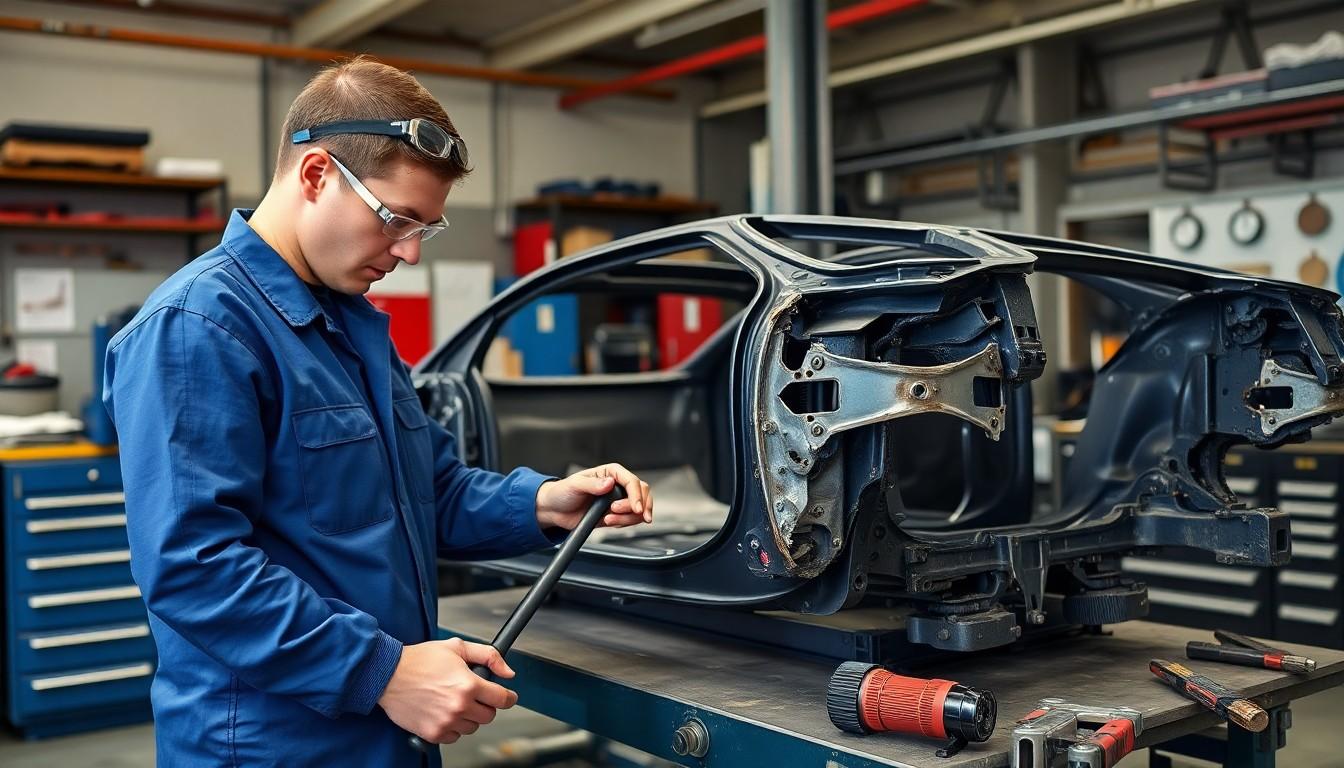
Unibody frames experience various levels of damage after collisions, each requiring exact repair approaches. Understanding these damage categories helps vehicle owners make informed decisions about repairs and costs.
Minor Cosmetic Damage
Minor cosmetic damage to unibody frames typically involves superficial dents or small bends in body panels like aprons and quarter panels. These imperfections don’t compromise the vehicle’s structural integrity and can be addressed with straightforward repair techniques. Skilled technicians can often straighten these affected areas using minimal specialized tools, restoring the vehicle’s appearance without extensive reconstruction. Cosmetic damage repairs are generally less expensive and time-consuming compared to more serious structural issues.
Moderate Structural Damage
Moderate structural damage presents more important challenges, including notable bends or distortions that affect the vehicle’s frame integrity. Repairs at this level require specialized hydraulic tools to carefully straighten twisted frame sections. Technicians must apply precise heat control and expert welding techniques to restore the frame to factory specifications. Following OEM guidelines becomes crucial during these repairs to maintain the vehicle’s safety standards. Moderate damage restoration demands professional expertise to ensure all structural components return to their original positions and maintain their designed strength properties.
Severe Frame Damage
Severe frame damage involves extensive deformation or ruptures that compromise the unibody’s core structure. Addressing this level of damage often requires cutting out destroyed sections and replacing them with new OEM parts through a process called sectioning. Technicians must strictly adhere to manufacturer recommendations during these complex repairs. Severe damage repair decisions balance several factors, including the cost-effectiveness of repairs versus replacement. Factory seams sometimes become inaccessible after collisions, necessitating strategic sectioning approaches. Proper restoration of crumple zones is essential during severe damage repairs to maintain the vehicle’s designed safety functions during any future impacts.
Are Unibody Frames Actually Repairable?
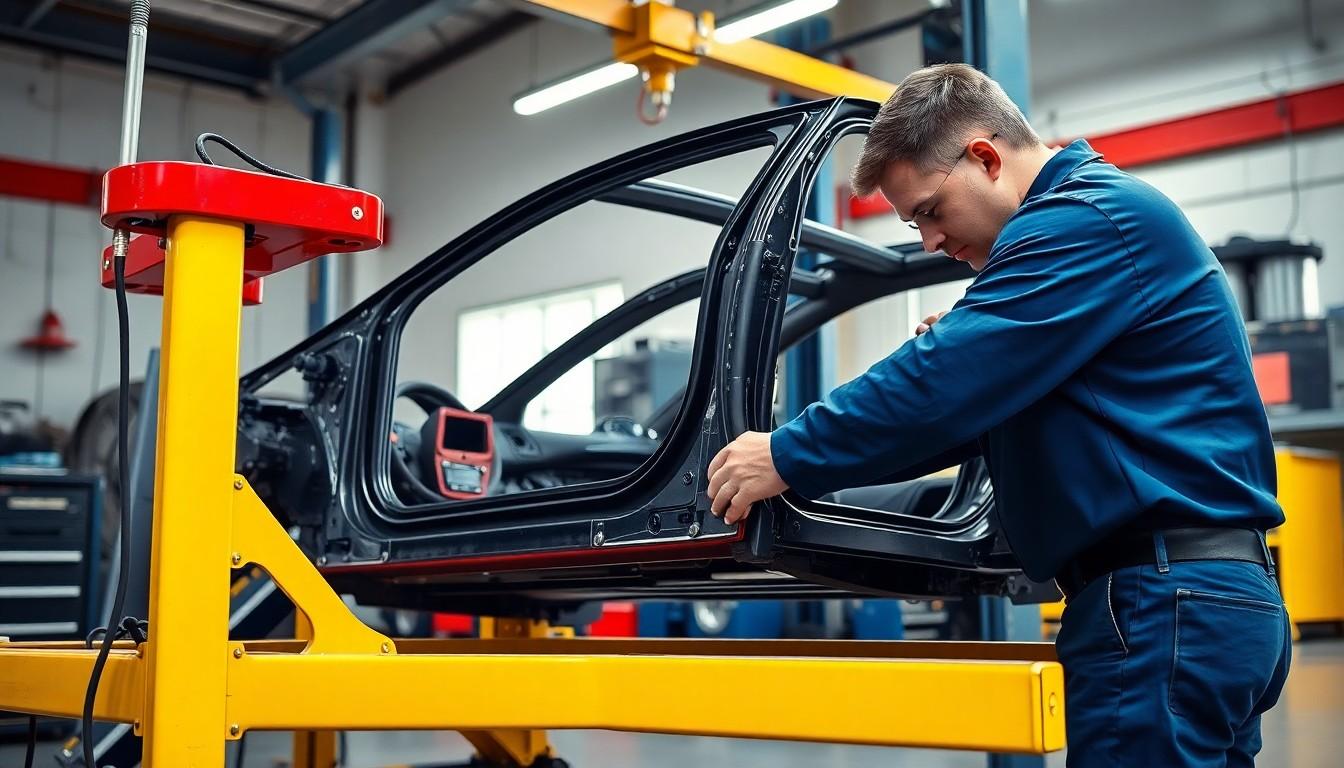
Yes, unibody frames are definitely repairable, though the process involves specialized techniques and considerations. Modern repair technologies have made it possible to restore many damaged unibody structures to their original specifications.
The Truth About Repair Capabilities
Unibody frame repairs require specialized tools and expert knowledge that aren’t available in typical home garages. Professional repair facilities use hydraulic straightening equipment that applies precise pressure to bent sections without causing additional damage. Specialized welding techniques with careful heat control are essential for maintaining the structural integrity of these integrated frames. The complexity varies based on damage severity – minor bends can often be straightened, while extensive damage might necessitate cutting out damaged sections and replacing them with original equipment manufacturer (OEM) parts. These technical requirements make unibody repairs significantly more complex than traditional frame repairs.
When Repair Is Possible vs. When It’s Not
Minor frame damage typically responds well to repair interventions. Small bends and alignment issues can be corrected through professional straightening and realignment procedures. Moderate damage often involves sectioning, where technicians replace damaged frame rail members at manufacturer-specified seams. Cost factors play a important role in repair decisions – minor damage repairs range from $600-$1,000, while comprehensive structural repairs can exceed $10,000. Repairs become impractical when costs approach or exceed the vehicle’s value. Safety considerations eventually determine repair feasibility – if technicians cannot fully restore the vehicle’s structural integrity, replacement becomes the safer option. Extensive damage affecting multiple structural components generally makes repairs economically unfeasible compared to vehicle replacement.
Modern Unibody Repair Techniques
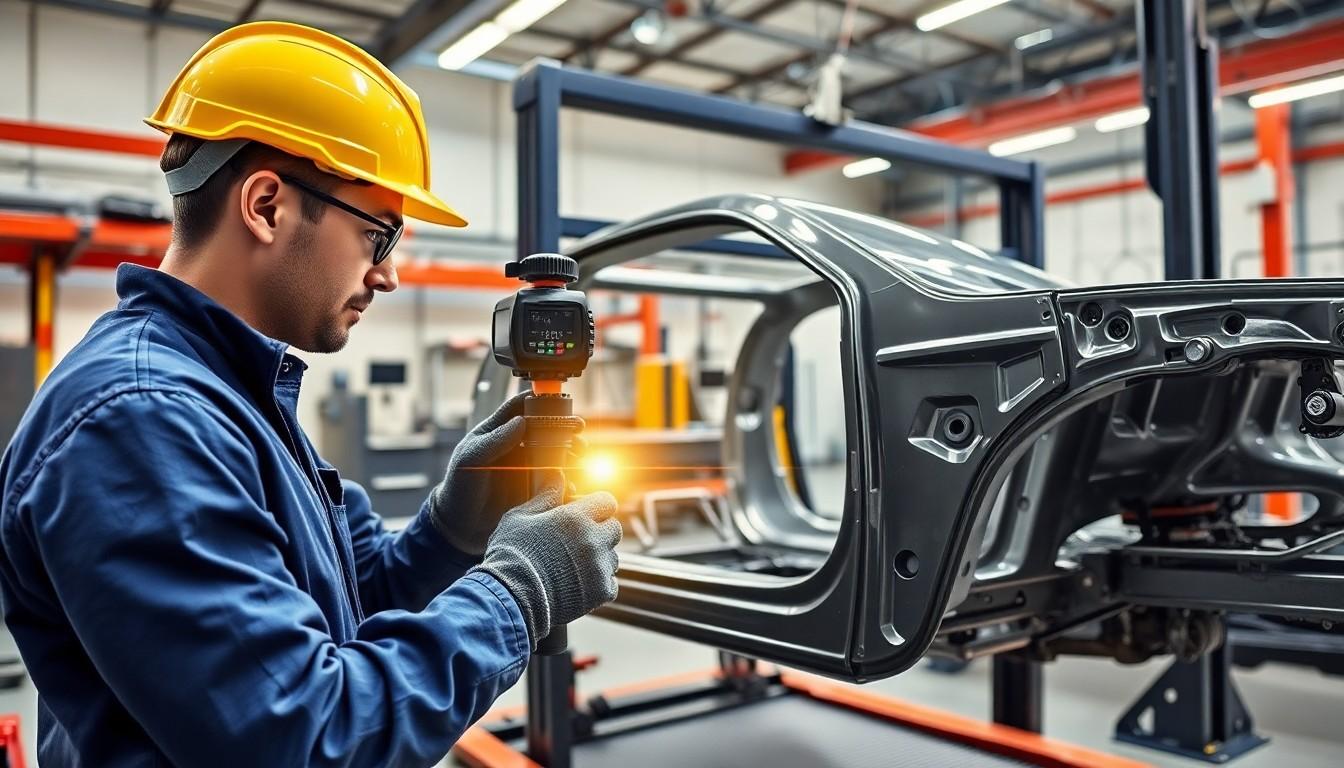
Unibody frame repairs require sophisticated techniques and specialized equipment to restore structural integrity. Professional repair facilities employ precise methods that combine engineering expertise with advanced technology to return damaged frames to manufacturer specifications.
Assessment and Inspection
Advanced measuring systems form the foundation of proper unibody repair. Laser measuring systems identify misalignments, bends, and structural deformities with millimeter precision, creating a detailed map of damage. Technicians compare these measurements against OEM specifications to develop comprehensive repair plans customized to each vehicle’s unique damage pattern. The vehicle is then secured to a frame machine or repair bench using specialized clamps and anchoring systems that ensure stability throughout the repair process.
Frame Pulling and Straightening Methods
Frame straightening begins with a thorough damage assessment using computerized measuring equipment. Technicians analyze the current dimensions of the frame compared to manufacturer specifications, identifying deviation points that require correction. Hydraulic pulling systems apply controlled force to gradually reshape the frame to its original alignment without overstressing the metal components. This precise realignment process preserves the frame’s structural integrity while correcting deformations. After initial adjustments, technicians verify repair accuracy using advanced measuring tools, making additional refinements until the frame meets OEM standards within specified tolerances.
Component Replacement Procedures
Certain damage scenarios necessitate component replacement rather than repair. Technicians evaluate each damaged section to determine if straightening is feasible or if replacement provides a safer, more structurally sound solution. Small bent areas typically respond well to straightening techniques, while sections with tears, severe deformations, or compromised metal integrity require replacement with factory-specified parts. Frame machines, hydraulic jacks, and specialized pull-down attachments help both straightening and replacement processes by providing the necessary pressure and precision. Heat-controlled welding joins replacement sections to the existing frame, requiring experienced technicians to maintain proper temperatures that won’t compromise the metal’s strength or protective coatings.
Specialized Equipment and Expertise
Hydraulic tools and dedicated frame machines represent essential components in modern unibody repair. These systems enable technicians to apply exact amounts of force to exact points on the frame, correcting complex deformations that would otherwise render a vehicle unrepairable. Only experienced professionals can perform the heat-controlled welding required for unibody repairs, as improper technique risks damaging the specialized high-strength steels and alloys used in modern vehicle construction. The combination of advanced equipment and specialized knowledge ensures repairs meet or exceed manufacturer safety standards while restoring the vehicle’s performance characteristics.
Cost Considerations for Unibody Repairs
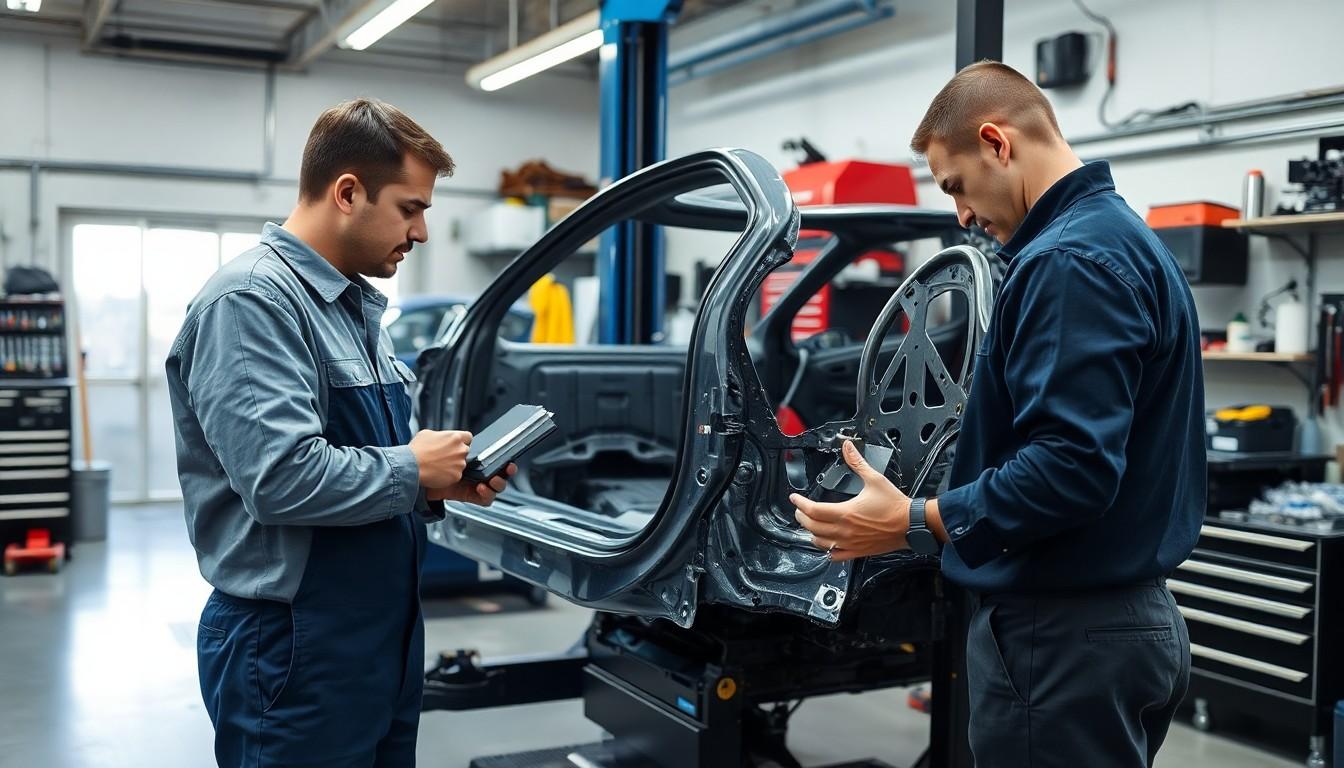
Unibody frame repairs often come with important expenses due to the specialized nature of the work required. Repair costs vary widely based on damage severity, with minor frame damage starting at $600-$1,000 while serious structural repairs can exceed $10,000.
Factors That Influence Repair Costs
The expense of unibody repairs depends on several key elements that impact the final price. Damage severity plays the most critical role in determining costs, with bent frames being particularly expensive to restore compared to minor dents or misalignments. Labor costs contribute substantially to the total expense since these repairs require highly skilled technicians who understand the complexities of unibody structures. Materials and replacement parts represent another important cost factor, especially when OEM (Original Equipment Manufacturer) components are required to maintain the vehicle’s structural integrity. Additional expenses may include specialized equipment usage, diagnostic fees, and finishing work to restore the vehicle’s appearance after structural repairs are completed.
Insurance Coverage for Frame Damage
Insurance policies typically address unibody frame damage through comprehensive and collision coverage options. Most standard comprehensive and collision policies include provisions for frame damage, though exact coverage details vary between insurance providers. Insurance companies require thorough assessments of the damage, often involving specialized frame measuring equipment to determine repair feasibility and costs. Policy limits eventually determine the extent of coverage, with insurers comparing repair costs against the vehicle’s actual cash value to decide whether to authorize repairs or declare the vehicle a total loss. Vehicles with repair estimates exceeding 70-80% of their market value are frequently deemed total losses by insurance companies, even when repairs are technically possible. Deductibles apply to frame damage claims just as they do with other collision repairs, reducing the amount the insurer pays toward the total repair cost.
Safety Concerns After Unibody Repairs
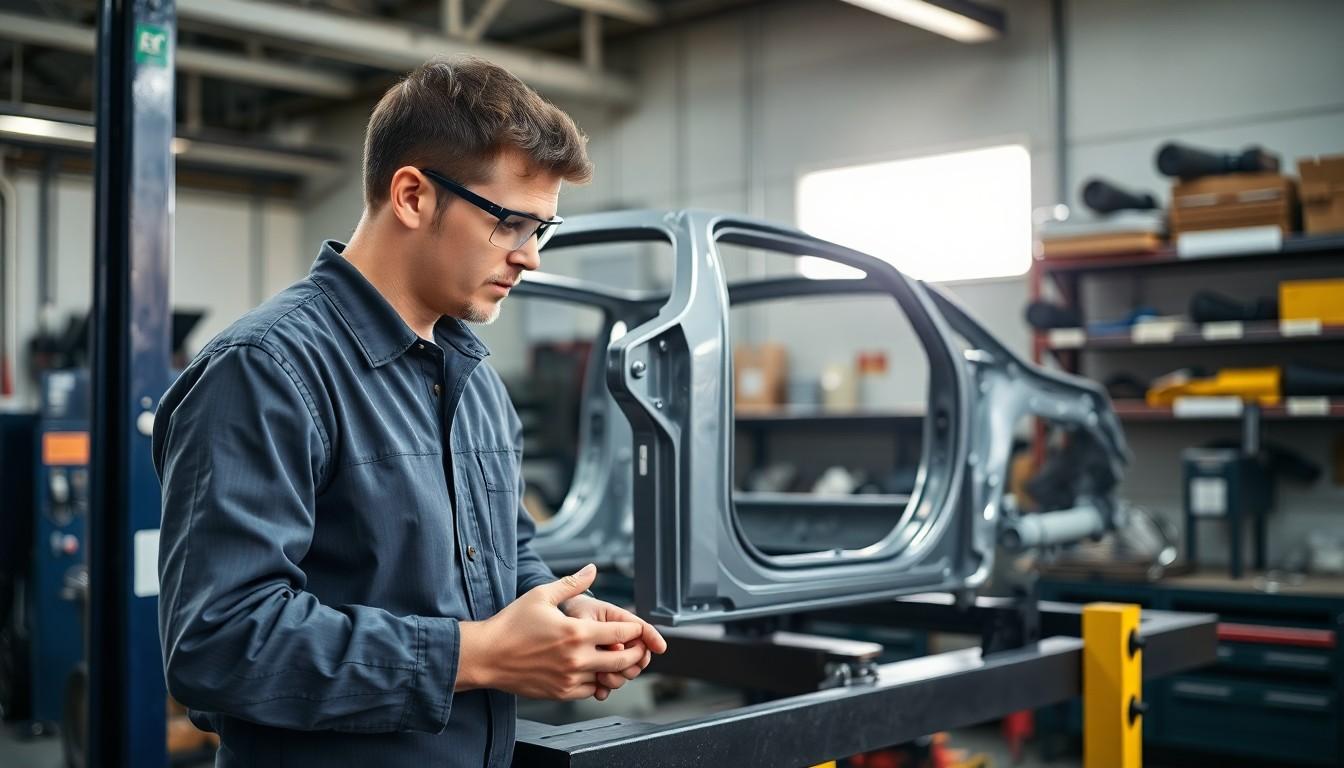
Safety concerns are paramount when considering unibody frame repairs. Proper repair techniques directly impact occupant protection and vehicle performance in subsequent collisions.
Structural Integrity Following Repairs
Structural integrity restoration is the primary goal of professional unibody repairs. Expert technicians follow manufacturer-exact guidelines to ensure all repairs maintain the vehicle’s original crash management capabilities. Sectioning techniques involve cutting damaged portions and replacing them with new OEM parts at designated seams, preserving the engineered crumple zones and impact distribution pathways. Frame straightening must be executed with precision using hydraulic tools to prevent metal fatigue or stress points that could compromise future crash performance. Specialized welding procedures recreate factory-strength connections between components, ensuring the repaired structure behaves identically to the original design in collision scenarios.
Impact on Vehicle Value and Resale
Unibody frame repairs significantly affect a vehicle’s market value regardless of repair quality. Repair costs range from $600 for minor damage correction to over $10,000 for comprehensive structural restoration, representing a substantial investment. Vehicles with documented frame repairs typically experience a 20-30% reduction in resale value compared to accident-free equivalents. Potential buyers often express concerns about hidden structural weaknesses even when repairs are performed to manufacturer specifications. Insurance companies maintain detailed records of major structural repairs through vehicle history reports, making it impossible to conceal this information from prospective purchasers. Even though excellent cosmetic appearance, the financial impact of frame repairs persists throughout the vehicle’s lifetime, affecting trade-in offers and private sale negotiations.
Finding Qualified Unibody Repair Specialists
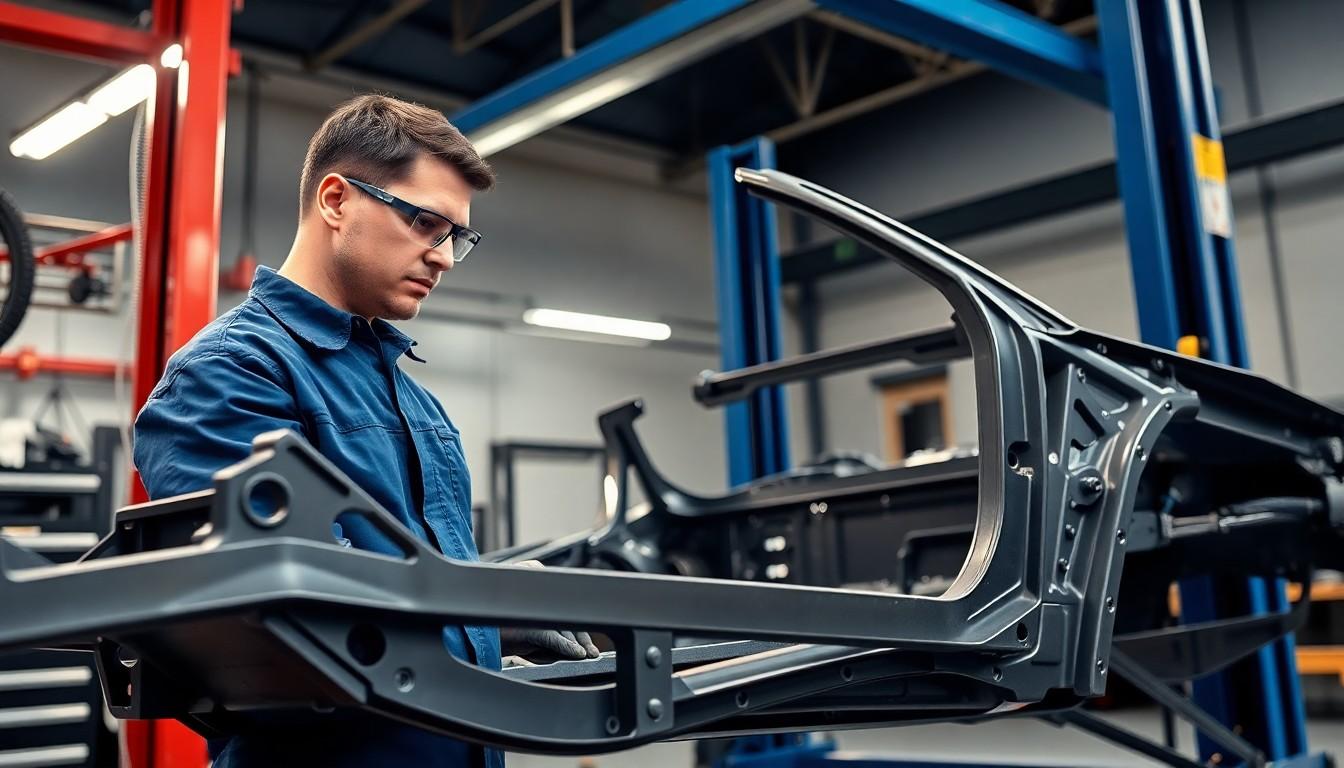
Finding qualified specialists to repair unibody frames requires careful research and evaluation. These specialized repairs demand technicians with proper training, equipment, and experience to restore your vehicle’s structural integrity safely.
What to Look for in a Body Shop
Reputable body shops handling unibody repairs possess exact qualifications that set them apart from general repair facilities. Technicians should have extensive experience specifically with unibody frame repairs and demonstrate proficiency with modern repair techniques. Specialized equipment like hydraulic straightening tools and frame alignment systems is essential for proper unibody restoration. Access to current OEM information ensures repairs follow manufacturer specifications, which is critical for maintaining safety standards. Customer reviews and reputation serve as valuable indicators of a shop’s ability to successfully complete complex unibody repairs. Certification from industry organizations often indicates the shop maintains high standards and invests in ongoing training for their technicians.
Questions to Ask Before Committing to Repairs
Thorough assessment of damage should be your first inquiry when discussing potential unibody repairs. Ask the technician to explain their diagnosis of the frame damage and outline available repair options based on severity. Cost estimates and repair timeframes vary significantly based on damage extent, with minor damage typically costing $600-$1,000 while serious structural repairs can exceed $10,000. Discussing repair versus replacement options helps determine if certain sections should be repaired or completely replaced with OEM parts. Safety standard compliance represents a non-negotiable aspect of frame repairs, so confirm the shop adheres to manufacturer recommendations and industry protocols. Warranty coverage for completed work provides additional protection and indicates the shop’s confidence in their repair quality. Requesting documentation of all repairs performed creates a valuable record for insurance purposes and future vehicle sales.
Conclusion
Unibody frames can be repaired successfully even though their complex integrated design. With modern technology and skilled technicians the majority of damage can be restored to manufacturer specifications.
The key lies in finding qualified specialists with the right equipment and expertise. Though repairs may affect resale value we’ve seen that proper documentation and quality workmanship minimize these impacts.
Remember that safety should drive your decision-making process. Sometimes replacement is the wiser choice when damage is extensive. Whether repair or replacement is your path forward ensure you’re working with certified professionals who follow OEM guidelines to maintain your vehicle’s structural integrity and safety.
Frequently Asked Questions
Can a unibody frame be repaired after an accident?
Yes, unibody frames can be repaired in many cases. Unlike traditional belief, damage doesn’t automatically mean totaling the vehicle. Modern repair techniques using specialized equipment can restore many damaged frames to manufacturer specifications. The feasibility depends on damage severity, with minor to moderate damage being more readily repairable than severe structural damage affecting multiple components.
What is a unibody frame and how does it differ from traditional frames?
A unibody frame integrates the body and frame into a single unified structure, unlike traditional body-on-frame designs. This construction creates lighter, more fuel-efficient vehicles (typically 10-15% less weight) with improved handling. Unibody designs enhance passenger safety through strategically designed crumple zones that absorb impact forces during collisions.
What materials are commonly used in modern unibody construction?
Modern unibody frames utilize high-strength steel, advanced high-strength steel, aluminum alloys, and carbon fiber reinforced polymers. These materials are engineered for optimal strength-to-weight ratios and impact resistance. Each material presents specific repair challenges requiring specialized techniques to maintain the vehicle’s structural integrity after damage.
What are the different types of unibody frame damage?
Unibody frame damage falls into three categories: minor cosmetic damage (superficial dents easily repaired), moderate structural damage (requiring specialized tools to restore frame integrity), and severe frame damage (necessitating complex repairs like sectioning and OEM part replacement). Each level presents unique challenges requiring professional expertise.
How much does unibody frame repair typically cost?
Repair costs vary widely based on damage severity. Minor repairs typically range from $600-$1,000, while comprehensive structural repairs can exceed $10,000. Factors affecting cost include damage extent, labor rates for skilled technicians, and OEM part requirements. Insurance companies often total vehicles when repair costs exceed 70-80% of the market value.
Does insurance cover unibody frame damage?
Most comprehensive and collision insurance policies cover unibody frame damage, though coverage details vary by policy. Insurers assess repair feasibility against the vehicle’s actual cash value. If repairs would cost more than 70-80% of the vehicle’s market value, insurance companies typically declare it a total loss rather than funding repairs.
How do unibody repairs affect vehicle safety?
Proper unibody repairs directly impact occupant protection and vehicle performance in future collisions. Correct repair techniques including following manufacturer guidelines, utilizing appropriate sectioning techniques, and ensuring precise frame straightening are essential for maintaining safety standards. Improperly repaired frames may compromise the vehicle’s ability to protect occupants in subsequent accidents.
Do unibody frame repairs affect vehicle value?
Yes, documented frame repairs typically reduce a vehicle’s resale value by 20-30% compared to accident-free vehicles. This occurs because potential buyers often worry about hidden structural weaknesses despite quality repairs. The financial impact of frame repairs persists throughout the vehicle’s lifetime, affecting both trade-in offers and private sale negotiations.
What equipment is used for unibody frame repairs?
Professional unibody repairs require specialized equipment including laser measuring systems for accurate damage assessment, hydraulic pulling systems for frame straightening, and specialized welding equipment. These tools allow technicians to precisely restore frames to manufacturer specifications, ensuring structural integrity and proper alignment post-repair.
How do I find a qualified shop for unibody frame repairs?
Look for shops with technicians specifically experienced in unibody repairs, access to specialized equipment like frame machines and measuring systems, and a commitment to following manufacturer specifications. Ask about their damage assessment process, cost estimates, safety compliance measures, and warranty coverage before committing to repairs.

